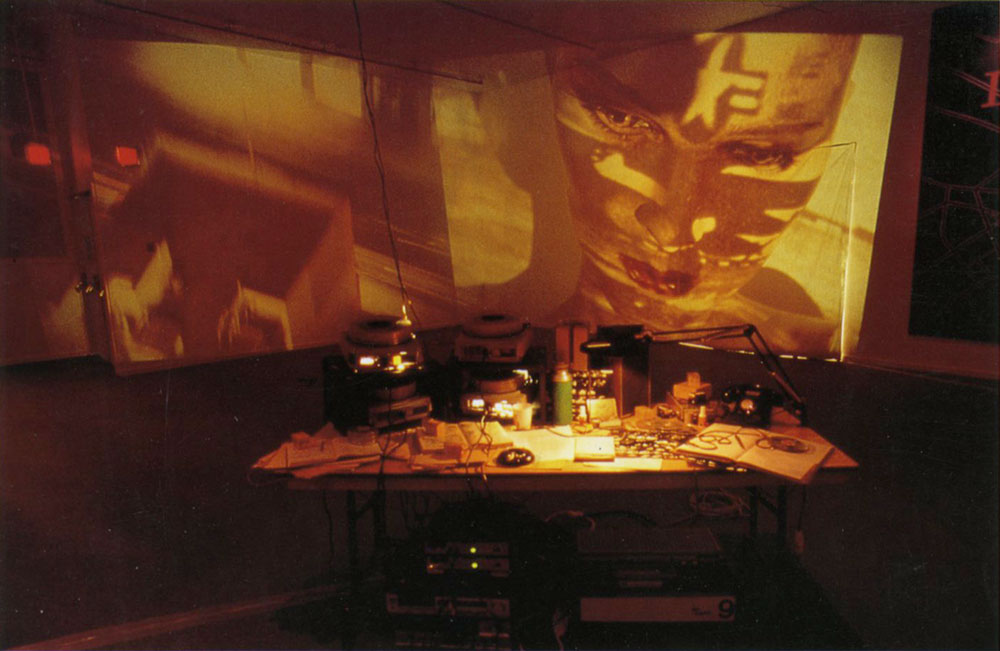Reflected Light and Photographic Images
Ian DeGruchy/Dennis Del Favero
Originally published by the NGA 1994
Exhibition: reflected light and photographic images in the contemporary australian gallery, 3 september-30 october 1994
 |
| Linea di fuoco, 1987, installation by Dennis Del Favero, Australia born 1953 |
Most of the photography seen in galleries is in the form of modest sized prints hung on the walls. Over the last decade impressively large colour prints have been particularly favoured by younger artists, but few works embrace the use of projected light images such as the familiar 35mm slide. Like Proteus of ancient Greek myth (who was able to assume different forms), slides seemingly change the scale of the subject at will and so mesmerise the audience.
As part of this year's Canberra Theatre Festival, the National Gallery is showing two installations using projected images; as well there will be a group of works using reflected light.
One of the installations, by Melbourne artist Ian DeGruchy, uses only slides. De Gruchy specialises in the transformation of whole buildings by giant projected transparencies. This will be shown in the Fairfax Theatre.
The second installation will be in the Australian Galleries: it was first mounted in 1987 by Italo-Australian artist, Dennis Del Favero—a collaboration between FILEF (Federation of Italian Migrants and their Families) and audio designer Paul Charlier and others. Linea di fuoco (Line of fire) is a multi-media installation comprising mural-sized groups of black and white photographs as well as projected colour slides with audio track.
The elements of the work are assembled in a mysterious interrogation room complete with table, projectors, recorders and other paraphernalia of surveillance. A fragmented, jagged narrative unfolds, which slowly reveals itself through secret surveillance photos and bugged tapes: of a love affair between Laura, an Italian migrant, and David, a Vietnam veteran pilot. Both are living in Australia; and both are suspected security risks.
Linea di fuoco is experienced as multidimensional time travel between images of a kind of Purgatory that might illustrate Dante's journey; popular Italian foto-romanze; Hollywood sci-fi; European movie classics; photojournalism and TV news.
At the time Linea di fuoco was made, the American bases at Pine Gap and the proposed Australia Card were topical issues seeming to herald a future in which everyone would be always under surveillance and in the line of fire.
Gael Newton
more Essays and Articles
|